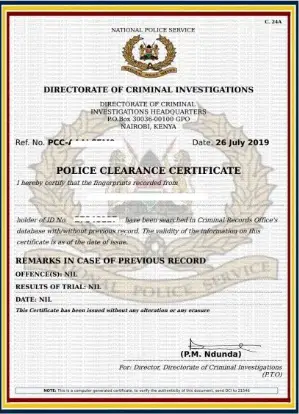If you’ve ever had to deal with the transfer of a motor vehicle, you know it can be quite a process. But what happens when the owner of a vehicle has passed away, or there’s a succession case involved?
In such situations, the NTSA (National Transport and Safety Authority) in Kenya has specific requirements and procedures to follow to ensure a smooth transfer.
In this article, we’ll walk you through the NTSA motor vehicle transfer process in deceased owner or succession cases. We’ll break down the requirements step by step, offer insights into common challenges, and provide practical tips to make this process as painless as possible.
Requirements for Motor Vehicle Transfer in Deceased Owner or Succession Cases
Request Letter for Alternative Transfer
Let’s start with the request letter for an alternative transfer. This is the first step in the process, and it’s crucial to get it right. Essentially, you’re asking NTSA to allow you to transfer the vehicle under these unique circumstances.
Original Logbook or Police Abstract and Form XI
Now, if you have the original logbook, you’re in luck. That’s the preferred document for the transfer. However, life isn’t always straightforward, and sometimes the logbook goes missing or gets lost.
When my cousin inherited our family car after my grandfather’s passing, we couldn’t find the original logbook anywhere. It was frustrating, but we knew we had to proceed.
We headed to the police station to get a police abstract, and the NTSA Form XI came to the rescue. This form helps you explain why you don’t have the logbook and still need to proceed with the transfer.
Properly Filled Form C
The infamous Form C – it’s notorious for being confusing and lengthy. But trust me, you’ll have to fill it out accurately. It contains essential information about the vehicle and its transfer.
Tape Lift Report
The tape lift report might sound like a peculiar requirement, but it serves a crucial purpose. It helps establish the authenticity of the vehicle’s chassis and engine numbers. It’s a safeguard against potential fraud.
Sworn Affidavit Before a Magistrate or Judge
This is where things can get a bit legal. You’ll need to create a sworn affidavit explaining the circumstances of the transfer. A magistrate or judge must witness and certify this affidavit.
Pro Tip: Consult a legal expert or advocate for drafting the affidavit. It’s essential to get it right the first time to avoid setbacks.
Copies of ID & KRA PIN of the New
You’ll need copies of new owner’s ID card and KRA PIN. This step ensures that the right people are involved in the transfer
Copies of ID & KRA PIN of the Previous Owner
Identification is paramount. You’ll need copies of the previous owner’s ID card and KRA PIN. This step ensures that the right people are involved in the transfer.
Copy of Death Certificate
A copy of the death certificate is another critical requirement. It verifies the owner’s passing and is essential in succession cases.
Copy of the Court Order Appointing Administrators or Executors
If there’s a succession involved, you’ll need a copy of the court order appointing administrators or executors of the estate. This legal document authorizes the transfer of assets, including the vehicle.
Copy of Certificate of Grant
This certificate is issued by the court and confirms the authority of the administrators or executors. It’s another layer of legal assurance in the transfer process.
Copy of the Schedule of Properties, Including the Vehicle
This document details the properties and assets being transferred as part of the succession. It’s crucial to clearly state the person inheriting the vehicle in this schedule.
New Owner’s TIMS Account Requirement
Last but not least, the new owner must have a TIMS (Transport Integrated Management System) account. TIMS is the online platform used for vehicle registration and transfers. If you don’t have one, it’s time to create it.
Personal Tip: Setting up a TIMS account can be a bit tricky, especially if you’re not tech-savvy. Ask a friend or family member for help if needed. It’s a one-time process that simplifies future transactions.
Conclusion
In the often complex world of motor vehicle transfers, dealing with a deceased owner or succession case can be particularly challenging. However, by following the requirements outlined in this article and being prepared for potential hurdles, you can navigate the process more smoothly.
Remember, the key to a successful transfer is thorough preparation and attention to detail. Take the time to gather all the necessary documents, fill out forms accurately, and seek legal guidance when needed. Additionally, embracing digital tools like the TIMS account can streamline the process and make it more convenient.
By understanding the NTSA motor vehicle transfer process in deceased owner or succession cases and following the steps outlined here, you can honor your loved one’s legacy or smoothly transition assets within your family. While it may seem daunting at first, with the right information and mindset, you can successfully navigate this journey and ensure the rightful transfer of a valuable asset – a motor vehicle – in accordance with the law.



